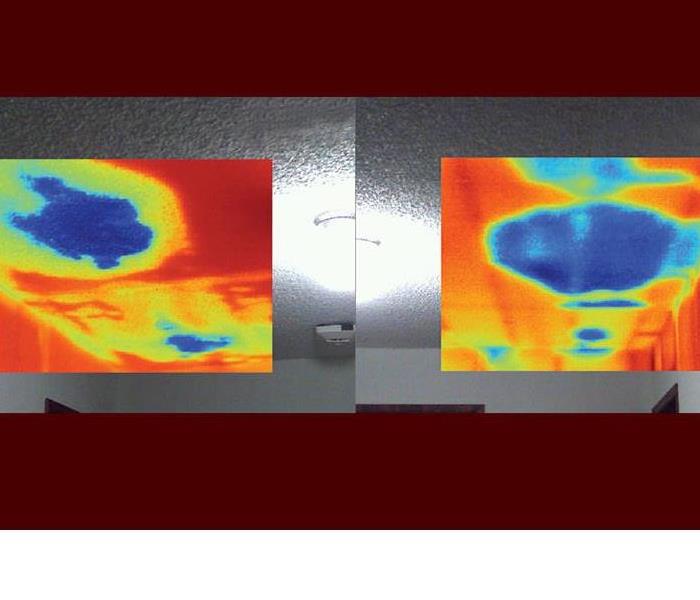Using Thermal Imaging Technology on Water and Fire Losses
12/6/2016 (Permalink)
 These two infrared images show where water from an unattended bathtub overflow in an upstairs room had entered the space between the floors and pooled
These two infrared images show where water from an unattended bathtub overflow in an upstairs room had entered the space between the floors and pooled
- Detecting a temperature difference behind a wall can save big bucks and time by avoiding the need for demo, and an idea where the source of water problem may lie, or if heat spots are detected in the event of a fire loss.
- Temperature difference does not always indicate moisture or water. It could be cool air from outside, so it requires some skill to determine if it’s one thing or another.
- Thermal cameras serve to guide the user to the cold spots usually associated with moisture. Moisture spots, where evaporation is happening, tend to be cooler, just like humans sweating.
- Most commonly, thermal imaging is used to find the source of a roof leak, condensation issues, leaking pipes, or air flow issues.
- In areas where moisture problems are abundant, like Seattle, the reasons for moisture can be very, very different, but the end consequence is moisture in the space, which can deteriorate the structure, and trigger mold growth.



 24/7 Emergency Service
24/7 Emergency Service